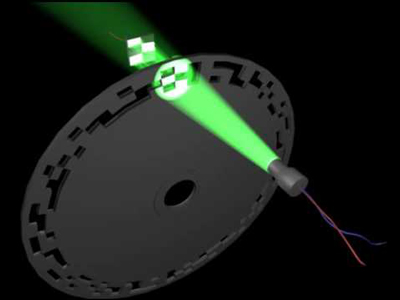Rotary encoders are electro-mechanical gadgets used for sensing in many industrial applications. They work by detecting the rotation of a disk which returns around an axis. Rotatory encoders are used in everyday machinery. Whether magnetic or optical, incremental or absolute, rotary encoders are designed to track the rotation of the motor shaft to cause digital position and motion information. The use of rotary encoders increases constantly in commercial and industrial designs.
Incremental encoders are typically used with ac induction motors for industrial applications. They are used when only relative position is needed, or cost an issue. Absolute encoders, on the other hand, are frequently paired with permanent-magnet brushless motors in servo applications.

Rotary encoders are specified for form factor and resolution. Resolution is defined as counts per turn for incremental encoders. For absolute single turn encoders, it is positions per turn, expressed as a multi-bit word. Multiturn encoders track over multiple 360° turns. They are specified in positions per input-shaft turn and the number of internal gear ratio turns.
The resolution that is required is dependent on the number of positions which require measurement. Thus, resolution is defined in terms of bits. For example, a 12-bit encoder refers to the binary number 212 that is 4,096 decimal. Therefore, a 12-bit encoder has a resolution of 4,096 points.
Accuracy on the other hand, is traceable to the encoding disc and the deviation between actual and theoretical position. Thus, for example, a good 12 or 13-bit encoder, is accurate to within half a count on the least significant bit.
Repeatability can be defined as the deviation of actual encoder position between subsequent identical code readings. It is defined as the encoder’s ability to read the same point each time the shaft is in a certain position. It is usually four to ten times better than accuracy, although they are not related.
Sealing of encoder
Perfectly sealed rotary encoders are impossible for designs that incorporate bearings, because there must be clearance to allow the bearing to slide over the shaft during the assembly of the encoder.
Even high-IP-rated bearings with plastic or rubber lip seals cannot cover all rotational speeds, designs and mounting positions. Also, all seals are affected by UV radiation degradation as well as aging.
Encoder bearings can be open (least protection), shielded (moderate protection) or sealed (most protection).
Types of rotary encoders
There are 5 major types of rotary encoders categorized by sensing technology and output signals.
- Sensing Technology: Optical encoders
Magnetic encoders
Laser encoders
- Output Signal: Incremental encoders
Absolute encoders

